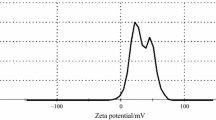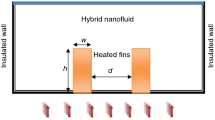Abstract
Recent studies show that sonic or ultrasonic oscillations can provide an attractive tool in enhancing mass-transfer rates in fluid media. An especially significant enhancement can be obtained for the interface mass transfer due to the ability of acoustic energy to be transferred through homogeneous fluids with little energy loss and to be greatly dissipated at the interfaces. In pyrometallurgical processes, many chemical reactions proceed at the interface between gas and molten bath under gas- or liquid-phase mass-transfer control. In the present study, cold model experiments were performed to examine whether the sonic irradiation can be useful for the enhancement of such reactions. In the experiments, the rates of three gas-liquid absorption reactions were measured under different experimental conditions that include blowing of the gas onto the interface, exposing the interface to sound waves and agitating the bath with an impeller. The experimental results showed that the sound waves are able to enhance the rate of reaction if it is fully or partly controlled by the gas-phase mass transfer. Within the frequency range of 0.53 ∼15 kHz, sound waves of higher frequencies were more effective in enhancing the gas-phase mass transfer. Besides, the enhancement effect was found to be larger under resonant-like conditions. Additional experiments revealed that sound waves impose oscillations on gas flowing above the free surface that imparts turbulent-like characteristics to the gas flow even if it is originally laminar. It is assumed that these acoustically imposed oscillations play the key role in enhancing the effective diffusion coefficient at the gas-liquid interface.








Similar content being viewed by others
References
J. Lighthill: Waves in Fluids, Cambridge University Press, Cambridge, United Kingdom, 1978, 504 p
W.P. Mason and R.N. Thurston: Physical Acoustics, vol. 4, Part B, Academic Press Inc., New York, NY, 1965, 265 p
B. Tal-Figiel: Int. Chem. Eng., 1990, vol. 30, pp. 526–39
O.V. Abramov: High-Intensity Ultrasonics: Theory and Industrial Applications, Gordon and Breach Science Publishers, Amsterdam, 1998, 692 p
K.A. Blinov: Application of Acoustic Oscillations for Steelmaking Processes, Metallurgia, Chelyabinsk, Russia, 1991, 192 p. [in Russian]
K.A. Blinov and S.V. Komarov: Proc. 2nd Int. Symp. on Metallurgical Processes for the Year 2000 and Beyond, San Diego, CA, 1994, TMS, Warrendale, 1994, pp. 413–27
Analytical Chemistry Handbook, 4th revised ed., Nihon Bunseki Kagaku Publisher, Tokyo, 1991, 426 p
V. Linek, T. Moucha and M. Korgac: Chem. Eng. Proc., 2005, vol. 44, pp. 353–61
J. Lighthill: J. Sound Vibration, 1978, vol. 61, pp. 391–418
G.E. Fortescue and J.R.A. Pearson: Chem. Eng. Sci., 1967, vol. 22, pp. 1163–76
J.C. Lamont and D.S. Scott: AIChE J., 1970, vol. 16, pp. 513–19
E.P. Mednikov: Acoustic Coagulation and Precipitation of Aerosols, USSR Academy of Sciences Press, Moscow, 1965, 180 p. (authorized translation from the Russian by Chas V. Larrick)
J.T. Davies: Turbulent Phenomena, Academic Press, New York, NY, 1972, 413 p
V.G. Levich: Physicochemical Hydrodynamics, Prentice-Hall, New York, NY, 1967, 700 p
L.D. Rozenberg: High-Intensity Ultrasonic Fields, Plenum Press, New York, NY, 1971, 429 p
Author information
Authors and Affiliations
Corresponding author
Additional information
Manuscript submitted September 6, 2006.
Rights and permissions
About this article
Cite this article
Komarov, S., Noriki, N., Osada, K. et al. Cold Model Study on Mass-Transfer Enhancement at Gas-Liquid Interfaces Exposed to Sound Waves. Metall Mater Trans B 38, 809–818 (2007). https://doi.org/10.1007/s11663-007-9086-6
Published:
Issue Date:
DOI: https://doi.org/10.1007/s11663-007-9086-6




